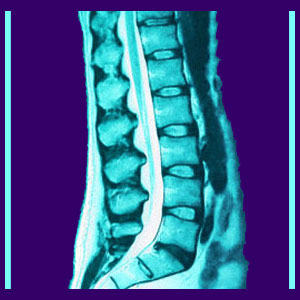
Spinal canal narrowing is one of the typical diagnostic conclusions described on spinal MRI reports and is often deemed responsible for enacting back or neck pain in many patients. The spinal canal is the hollow space through containing the spinal cord and the origins of the spinal nerve roots, as well as cerebral spinal fluid and other tissues. Narrowing of the spinal canal is usually diagnosed as spinal stenosis, depending on the causative reason for the decrease in canal space.
This essay will explore the reasons why central canal narrowing may occur in the spine and the consequences it may produce.
Origins of Spinal Canal Narrowing
A narrowed central canal space can be enacted by many possible structural conditions. The most common contributors to a less patent central canal include:
Arthritic changes can cause the build-up of osteophytes and degenerative effects which can limit the space inside the spinal canal.
Slipped discs can bulge into the spinal canal, causing a mass effect on the thecal sac or even affecting the viability of the spinal nerve structures. A large herniation might severely limit the space in the spinal canal, especially in the presence of contributing ligamentous hypertrophy.
Fractured vertebrae may limit the space inside the spinal canal.
Spinal tumors can limit the space inside the spinal canal.
Many people are born with a congenitally narrowed canal. This may occur in specific areas of the spine or may affect the overall diameter throughout much or all of the central canal space.
Spinal Canal Narrowing Consequences
A gradual reduction in the size of the spinal canal is normal as we age. This is why spinal stenosis is an extremely common condition in the elderly. Luckily, a narrowing of the canal is not inherently painful or problematic. In some cases, the spinal cord may suffer impingement when stenosis is severe and the resulting symptoms may be disabling in extreme cases. In most patients, a mildly to moderately narrowed canal due to typical degenerative changes will be completely asymptomatic.
In some circumstances, a blockage in the spinal canal may not influence the spinal cord itself in terms of compression, but may affect the proper circulation of the cerebral spinal fluid. This may increase the chances for a spinal syrinx to form in some patients, particularly those with other structural irregularities, such as Chiari Malformation.
Spinal Canal Narrowing Considerations
Decreased space within the spinal canal is normal as we get older. It is for this reason that spinal stenosis is known as a disease of advanced age. However, the condition is not a disease and is not inherently troublesome for the majority of patients who demonstrate the distinct structural changes associated with a narrowed canal. For some patients, the stenosis can create the right circumstances for pain and neurological symptoms virtually anywhere in the body, below the impinged levels.
Spinal stenosis diagnosis, as a cause of symptoms, is a very inaccurate science, in that many innocent cases are theorized to be symptomatic, while some truly horrific symptoms in the lower body are never linked to the actual causative stenosis in the cervical spine. I always recommend that patients who are suspected of suffering from or positively diagnosed with a narrowed central canal seek specialty care from a spinal neurologist, including demanding all the testing which can help to confirm or eliminate the stenosis as the actual source of symptoms.





